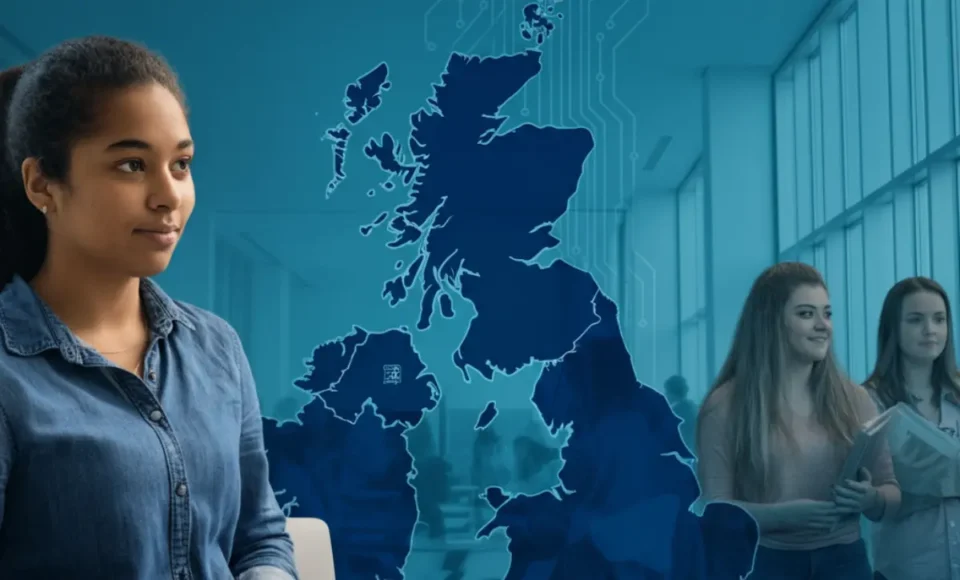LONDON, England – 20 October 2025 – Across England, there’s buzz about something called “V Levels.” Conversations in schools, staff rooms, and homes often turn to this term, with many people actually referring to the government’s T Level qualifications. If you’re a student, parent, or employer, understanding what these new technical pathways offer could shape important choices about the future.
T Levels are at the centre of one of the most significant changes to post-GCSE education in years. Designed with input from businesses and colleges, they’re built to connect classroom learning with the professional world, aiming to give students a practical edge as they move towards skilled work or further study.
What Are T Levels (or “V Levels”)?
T Levels, sometimes referred to as “V Levels” in everyday chat, are two-year technical courses available to young people in England after they’ve completed GCSEs. Unlike traditional routes, these qualifications blend classroom study with real work experience. The idea is to set you up not just with knowledge but with the hands-on skills and workplace confidence that employers are looking for.
A typical T Level involves 80% classroom-based learning and 20% spent on a meaningful industry placement. This isn’t a brief work experience week—it’s a commitment of at least 315 hours, or over 45 days, working alongside professionals in the chosen industry.
How Do T Levels Compare to A Levels and Apprenticeships?
Choosing the right post-16 qualification can feel daunting. A Levels focus on academic study, usually for those considering university, while apprenticeships are mainly on-the-job training with some classroom elements.
T Levels aim to bridge the two. They offer the structured learning of A Levels and the workplace experience found in apprenticeships, creating a balanced option for students who want both theory and practice. Employers appreciate this, with one HR manager saying, “Students coming out of T Levels have a switch-on attitude and real-world experience we can use straight away.”
Why Are Industry Placements So Important?
No other post-16 qualification in England includes a compulsory industry placement as long as the one in T Levels. During this time, you’ll be rolling up your sleeves and working side by side with people who do the job every day. This is a real chance to test out future careers, build practical skills, and make helpful industry contacts—all before you’ve even finished your course.
Teachers often report that students return from placements with more maturity and clearer ambitions. Many say this hands-on approach is what sets T Levels apart and helps prepare learners for the real world.
Where Are T Levels Available and What Subjects Can You Study?
T Levels have been rolling out since 2020, with more schools and colleges across England adding them to their course lists each year. The government’s plan is to make sure as many students as possible can access these courses, from larger cities to rural communities.
Subjects now include:
- Digital
- Construction & Built Environment
- Health & Science
- Engineering & Manufacturing
- Business Administration
- Legal, Finance & Accounting
This growing choice shows a commitment to matching student interests with the UK’s skills needs.
Are T Levels Recognised by Universities and Employers?
A big question for students and their families is: Will T Levels open the same doors? The answer is yes—many universities accept T Level qualifications, with UCAS assigning tariff points for grades just like A Levels. Top marks in a T Level course are equivalent to the best A Level results when applying to higher education.
Employers are also on board, having helped create course content to ensure it matches current job roles. Companies say T Level grads often hit the ground running, already used to working to real deadlines and standards.
For more details on the structure, recognition, and latest updates on T Levels, visit the official UK government T Levels page.
Key Takeaways
- T Levels, sometimes called “V Levels,” are two-year technical qualifications for students in England post-GCSE.
- They combine classroom learning with a significant industry placement of over 45 days.
- Subjects on offer range from Digital and Engineering to Health and Business.
- T Levels are designed with input from employers and accepted by many UK universities.
- Students leave ready for skilled employment, further study, or higher apprenticeships.
The Future for UK Students
With more schools and colleges adopting T Levels, and growing recognition by universities and leading UK employers, these qualifications are becoming a real option for students seeking practical, career-focused paths after GCSEs. While “V Levels” might be the phrase you hear at home or on social media, the official T Level pathway is here to stay, offering a smart route for the next generation of British professionals and innovators.
You may also read : Shanghai Port FC: Rising Stars of the Chinese Super League
You may visit our official website : nbatimes

